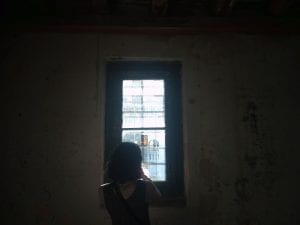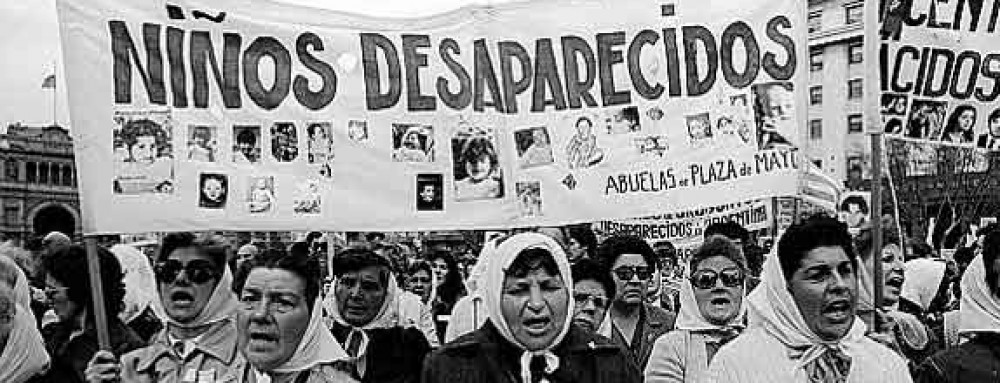Politics are a central theme in Argentina, and there are unique qualities that I have never witnessed in another country. Rather than having a defined left and right, there are the Peronists (a Populist party) and those opposed to them. I have not done enough research to know what the truth is (it seems almost impossible to discern) but claims of corruption have plagued the Peronists since their founding. The current Vice President Cristina Fernández de Kirchner is currently appealing a six-year prison sentence in the Supreme Court. Whatever the fact of the case may be, she is clearly beloved by the people as seen in the photos of the Independence Day parade that was essentially a demonstration in her favor. Noam Lupu writes in his article The End of the Kirchner Era about the history of the Kirchners in politics and suggests that the voting public have similar values, and economic issues that are possibly beyond the grasp of any one political party are their main concern. Either way Argentina is celebrating 40 years of Democracy as their Human Right.
Category Archives: 3. How do we define are human rights in daily life?
Education As a Human Right
One of my favorite parts of our trip was the visit to the original buildings of the Cordoba University. Our phenomenal docent Guadalupe ended our visit with a story about how a student’s defending their dissertation was linked to their connections, and how much wealth and religious power they wielded. She told us the story of The Cordoba Manifesto, and how the students protested the unfair hierarchies and staged a walkout. This made me think about how education is a Human Right, and how we as students need to stand up for our rights if we discover corruption in the educational system.
Eva Perón
Before visiting Eva Perón’s museum, I did not understand how important she was to Argentina. Seeing the mausoleum she now rests on also did not indicate her significance. Still, I now know that is the result of kidnapping and removal by the military. Evita accomplished so much in only 33 years. The transit home she opened seems to be the most significant. By purchasing a mansion for houseless women and children, she exclaimed that all people deserved to live an equal life and the sharing of wealth is necessary. I think the closest person to a First Lady similar to her in the US would have been Eleanor Roosevelt, but I am not entirely sure that is a fair comparison. Her role as a humanitarian shows the importance of upholding the freedoms of others. This idea is expressed in ‘Criminalizing Human Rights Violations,’ and I think Evita embodied these ideals perfectly. I thought it was interesting that we could not photograph any of her dresses because I think the very with most public figures who are women, their clothing has become idolized (I.e., Jackie Kennedy’s pink suit or Princess Diana’s wedding dress). Still, at this museum, it seemed as though they wanted the focus to be on her activism and not on what she was wearing.
Eva “Evita” Peron Museum
I got to visit the Museum of Eva ‘Evita’ Peron. Before visiting I had no idea who she was and how important she was to the Argentinian community. I feel like we had a lot in common, especially being raised by a single mother who had to do what she could to provide for me and my siblings. I was inspired to know that no matter the struggle, she left her home to follow her dreams. She excelled as an actress and made a great name for herself before ever being First Lady.
There were many ways that Mrs.Peron could have used her life, but she used it to make sure women and children received the proper care and necessities they deserved. Women who were looking for jobs were introduced to sewing which she had seen her mom do for money as a child. There were several machines handed out by Mrs. Peron personally to show her true care for those she helped. She also made sure many children knew what it meant to be spoiled and treated as if they were equal to other children who came from richer backgrounds. It was also amazing to know that women from here are able to vote now because of her fight for them and herself! She was even seen voting from her sickbed after years of fighting for womens rights to vote, I know that was a legendary photo!
I feel we define human rights in everyday life and we protect them by doing what Mrs. Peron did in her life. She knew what it was like to come from nothing and made sure people who were just like her felt that they mattered. She made sure to promote freedom of opinion and expression and didn’t let anyone treat people like they didn’t matter. Her life is an example of how we should protect the human rights of others and use our voices to make a difference.
Human Rights: Do we focus on the past or present?
 One idea that stuck out to me during one of our discussions was the debate over which human rights violations should be memorialized/fought for more heavily. Gabe mentioned a professor of psychology, Albert Colaski, who spent five years in various prisons around Argentina, including La Perla. He became the Chair of Human Rights at the Faculty of Psychology at UNC and became controversial due to his ideas about human rights. He made the point that human rights violations occur every day – in the form of homelessness, unequal rights between men and women, etc. Fernando told me that Colaski trained police officers on human rights issues. People criticized him because they felt he was enabling the state – who to many, is the enemy. However, as Fernando said, it is worth it to train police officers basic respect to the people they “serve.” It is better than nothing. While it is still incredibly important to memorialize past human rights violations like the military dictatorship and sites such as La Perla, I think it’s just as important to fight for ongoing and everyday human rights violations. In our conversation it was brought up that there was a debate between victims of the dictatorship and those who simply lived through it; there was disagreement on whether victims should dominate the conversations surrounding memorializing human rights. As I understand it, victims and those who strongly believed in justice for victims were upset at Colaski for his encouragement on focusing on more issues. I think this particular issue is important because many people don’t necessarily view issues like inequity or homelessness or women’s issues to be human rights violations. In reality, they definitely are. If we overlook these issues and focus entirely on the past, nothing will be done about people suffering in the present. I think there is a way to fight for both – memorializing the past and educating people in the present so that particular event never happens again, and also recognizing that there are current problems that need immediate attention. If we are willing to be compliant and overlook “smaller” things, where is the bar for what we won’t tolerate?
One idea that stuck out to me during one of our discussions was the debate over which human rights violations should be memorialized/fought for more heavily. Gabe mentioned a professor of psychology, Albert Colaski, who spent five years in various prisons around Argentina, including La Perla. He became the Chair of Human Rights at the Faculty of Psychology at UNC and became controversial due to his ideas about human rights. He made the point that human rights violations occur every day – in the form of homelessness, unequal rights between men and women, etc. Fernando told me that Colaski trained police officers on human rights issues. People criticized him because they felt he was enabling the state – who to many, is the enemy. However, as Fernando said, it is worth it to train police officers basic respect to the people they “serve.” It is better than nothing. While it is still incredibly important to memorialize past human rights violations like the military dictatorship and sites such as La Perla, I think it’s just as important to fight for ongoing and everyday human rights violations. In our conversation it was brought up that there was a debate between victims of the dictatorship and those who simply lived through it; there was disagreement on whether victims should dominate the conversations surrounding memorializing human rights. As I understand it, victims and those who strongly believed in justice for victims were upset at Colaski for his encouragement on focusing on more issues. I think this particular issue is important because many people don’t necessarily view issues like inequity or homelessness or women’s issues to be human rights violations. In reality, they definitely are. If we overlook these issues and focus entirely on the past, nothing will be done about people suffering in the present. I think there is a way to fight for both – memorializing the past and educating people in the present so that particular event never happens again, and also recognizing that there are current problems that need immediate attention. If we are willing to be compliant and overlook “smaller” things, where is the bar for what we won’t tolerate?
Rights Denied
The prologue of Nunca Mas lists some basic human rights – the right to life, the right to security of person, the right to a trial, the right not to suffer either inhuman conditions of detention, denial of justice , or summary execution. Every day, we enjoy all of these rights. The disappeared enjoyed none of them.
Another right that isn’t mentioned above is the right to property. In Cortazar’s short story House taken over, two women move into smaller and smaller quarters in the house they love until they are finally forced out into the streets. They never see their invaders, but they hear them coming and they fear for their safety. The lose their property and they also lose their right to security of person.
The “Dirty War”, in Juxtaposition
 Today, during our tour of Cordoba City, Fernando described Argentina’s journey in dealing with the effects of the dictatorship and their “Dirty War”. He spoke about how the country continues to preserve the memory of the human rights abuses that occurred 70 years ago through artwork, monuments, and museums, in an attempt to prevent those abuses from happening again. But a careful line is constantly being toed between remembrance and normalization. This discussion reminded me of a photo I took yesterday outside of the Municipalidad de Cordoba.
Today, during our tour of Cordoba City, Fernando described Argentina’s journey in dealing with the effects of the dictatorship and their “Dirty War”. He spoke about how the country continues to preserve the memory of the human rights abuses that occurred 70 years ago through artwork, monuments, and museums, in an attempt to prevent those abuses from happening again. But a careful line is constantly being toed between remembrance and normalization. This discussion reminded me of a photo I took yesterday outside of the Municipalidad de Cordoba.
The photo itself is of an artwork installation outside the government building commemorating the Desaparecidos and the individuals who managed to escape the abuses. While it’s not pictured, just outside the frame was a group of teenagers playing music, dancing, and filming themselves. Seeing this made me think about how the different generations might relate to the horrific events of the past, and how that influences them to react in the present. While to most of the older generation, the artwork would’ve evoked a very personal reaction, the younger generation having no intimate knowledge of the events (knowing only what they know through textbooks or anecdotes) tends to be desensitized due to normalization.
Fernando’s one statement really had an impact on me; no matter what has occurred in the past, for better or worse life moves on.












